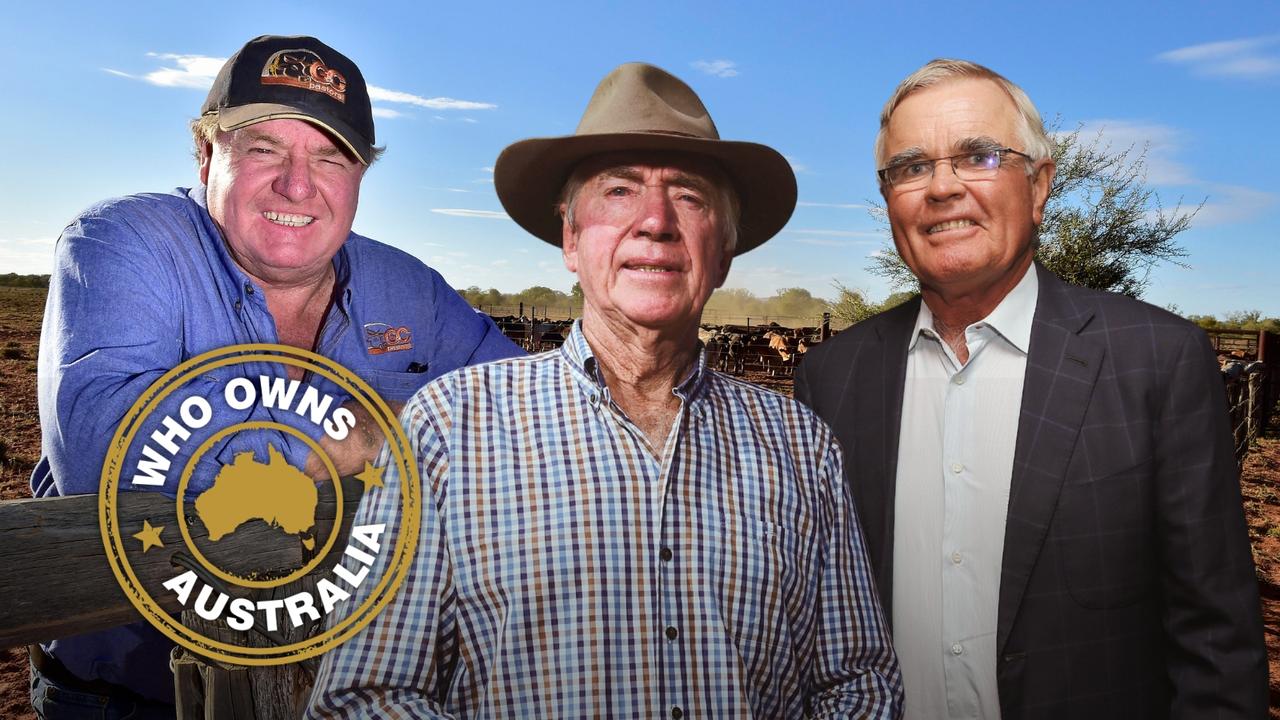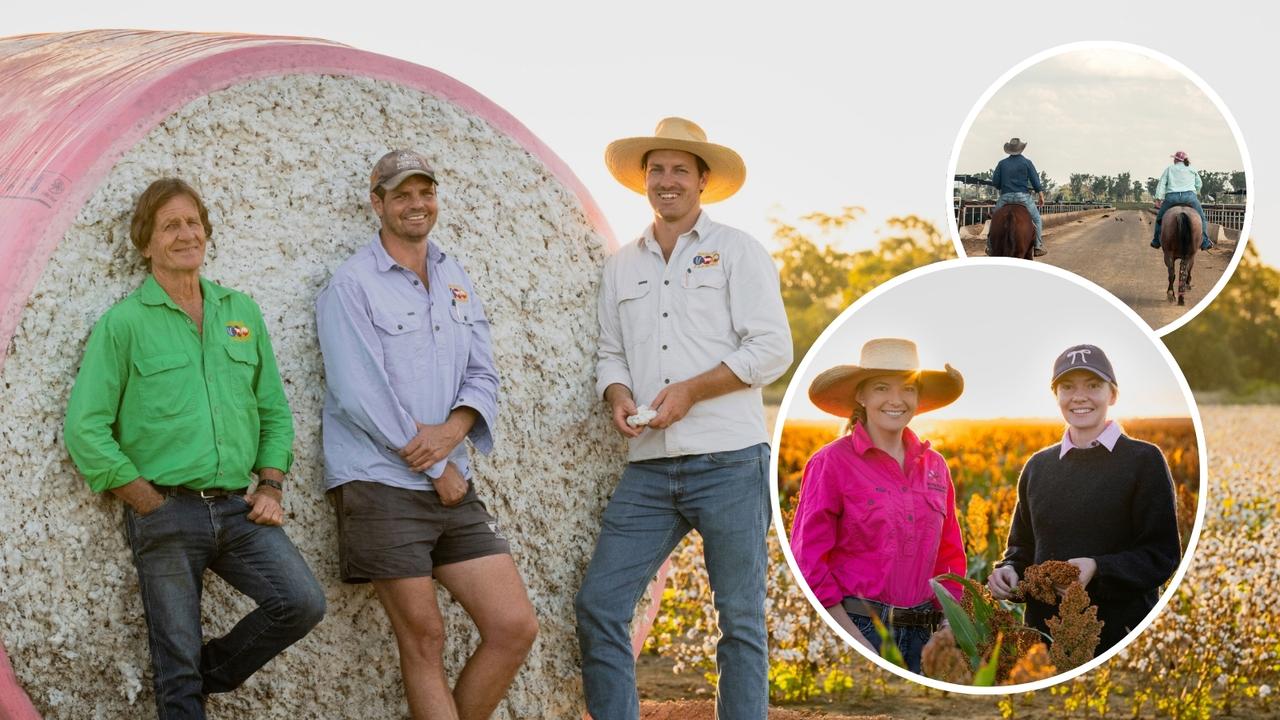Australia’s most innovative farmers share their ideas
Innovation has been the salvation of Australia’s ag industry as farmers look outside the square to increase production and profitability. Learn from those going above and beyond.
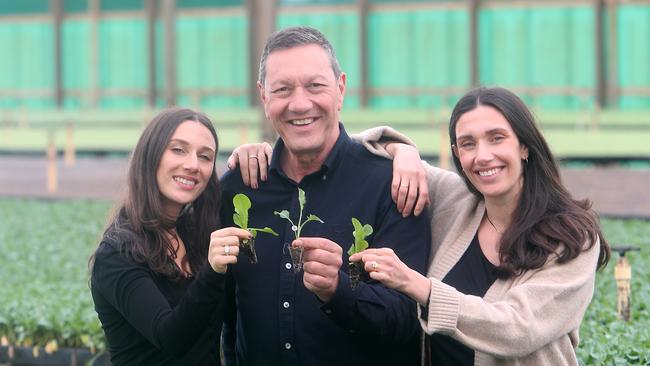
No one could wipe the triumphant smile off John Said’s face at the recent Hort Connections gala dinner.
When the plates were cleared away after an epicurean feast, made with Victoria’s finest produce, the chief executive of Fresh Select enthusiastically informed guests that while enjoying the succulent Shaoxing wine infused Bendigo chicken, prime Victorian beef with truffle mash and pan roasted scallops, they’d also just unwittingly eaten an additional 1500 serves of vegetables and diverted 500 kilograms of food waste.
Even the decadent blood orange and dark chocolate tart Australia’s best horticulturalists devoured for dessert, was packed with hidden vegies.
“We call it health by stealth,” John Said enthuses, clearly proud of the Nutri-V vegetable powders his team created with the CSIRO, to utilise nutrient-dense plants otherwise destined for landfill.
Since Fresh Select began 35 years ago, the family run business has always had one eye on innovation, continually searching for ways of doing things better. Today, Australia’s largest lettuce and brassica grower, is one of a new generation of primary producers finding solutions to global problems, not only to ensure the sustainability and viability of their own business, but their industries too.
“Everyone’s got a food waste problem in horticulture and a lot of energy is being used to deal with that food waste, irrespective of the product,” John Said says. “We think our food powders are a game-changer and if there’s an opportunity for more Australian farmers to benefit from what we are doing, bring it on.”
Australia’s primary producers have a long and proud record of innovation. For more than a century, our distance from the rest of the world, and unique, often harsh, and unpredictable conditions have inspired breakthroughs in agriculture that have been adopted worldwide; think of the Header Harvester, immortalised in bronze at Henty, the Wolseley Shearing Machine and the iconic Stump-Jump plough.
Even the much-loved ute was rumoured to have been inspired by a letter to Ford from a Geelong farmers wife who wanted a vehicle to take her to ‘church on Sunday’s and pigs to market on Monday.’
However, today’s farmers are going one step further, cleverly combing science, cutting-edge technology, and old-fashioned paddock nous, to create world-class farms and farming systems that are solving the problems of our time.
“Australia can hold its head high globally in terms of innovation,” says Harriet Melish, general manager of global innovation at AgriFutures, “especially with producers themselves innovating, that’s a unique proposition. In others countries a lot of innovation comes through large commercial corporates, not from the farmers on the farm itself. We are in an exciting period of growth and innovation in Australian ag, and those who have a great idea, can secure the investment needed to drive it.”
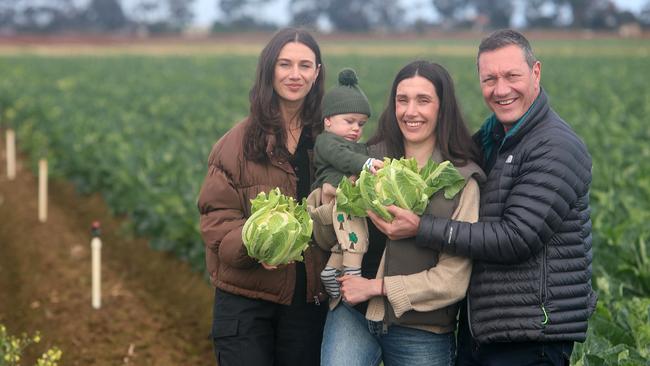
INNOVATION PIONEERS
Twenty-five years ago, long before ‘sustainability’ and ‘innovation’ became buzzwords, John Said and his business partner Con Ballan were focused on continual improvement as a matter of necessity to build Fresh Select, then a 200-hectare farm in Victoria’s food bowl, Werribee.
“We never really knew what sustainability meant, other than money in the bank,” John says. “It was about looking at our farming activities to see how we could do things better and get a competitive edge.”
During the decades of tilling the rich red soils around Werribee, and expanding to 1600 hectares of production in Victoria, Queensland and South Australia, Said and Ballan have looked at every millimetre of their supply chain to improve the business.
They were early adopters of renewable energy installing one of Victoria’s largest solar fields on the roof of their vast warehouses, they focused on soil health, introduced Integrated Pest Management systems to reduce chemical use, and developed rapid distribution of product for maximum freshness – they can get a semi-trailer of lettuce distributed within three hours of being picked.
But there was one problem that continually eluded them, food waste.
“There’s programs like the ‘ugly’ range in supermarkets for misshapen produce, but they only deal with part of the waste,” Said says. “On average, two out of every ten plants don’t get to market, we plant a million plants per week, so that suddenly becomes 200 000 waste plants every week. If you put a simple dollar value on it of $1 per plant, that’s a loss of $200,000 per week.
“That’s not the motivation though,” he stresses, “the motivation is that this high-quality plant product is being wasted, and headed for landfill. We needed to do something with it, we can’t just walk away and leave it, because even ploughing it into the ground expends a lot of energy.”
The Fresh Select team commissioned the CSIRO to find a way of getting the product off the farm and into consumers’ hands. Vegetables can be up to 95 per cent water and they found that by removing the water and condensing the veggies, they could be dried to create a nutrient-rich, fortified powder in a highly versatile form. To date, they’ve diverted nearly 300 tonnes of food from landfill, which equates to over three million additional serves of vegies that have benefited the community.
“You can hide these powders in your cooking to add nutrition or you can showcase them, for example Qantas are using our pumpkin powder to make soups for their lounge. You can add it to gourmet coffee or smoothies, there’s so many ways of using the powders, in fact more than we ever initially imagined, it’s really exciting to see what we can do,” he enthuses.
The powders are now available in Coles and they are working with international distribution, aware that such a breakthrough has the potential to make a significant impact on global nutrition and the environment. It’s the bold vision of global good that drives and inspires John and his team to continue to invest, even though the Nutri-V business is yet to turn a profit.
“My daughter adds a little pumpkin powder to my grandson’s stewed apple each day, he loves it. And our COO puts our cauliflower powder on his son’s Weetbix. I think we’ve cracked the code of parenting, getting kids to eat their veggies,” he laughs.
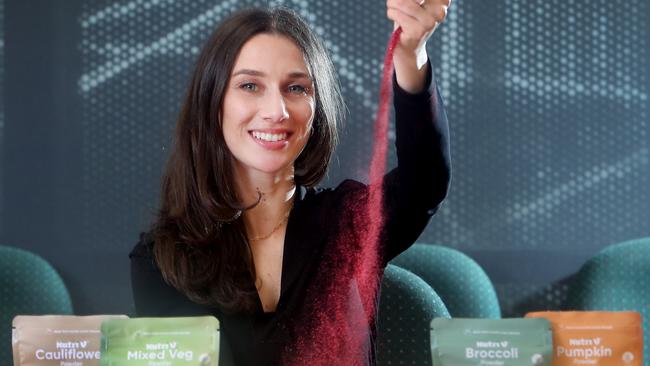
‘NO ROOM FOR COMPLACENCY’
In a recent report, the Australian Farm Institute warns that Australian farming is becoming increasingly risky business due to our unpredictable climate and an accelerated pace of changing risk exposure.
The institute warns there’s no room for complacency in agriculture. However, for some primary producers, our changing climate has proven to be a significant driver of ideas, innovation, and change.
When Nigel Kerin started noticing changes in the rainfall data his family had kept for decades, with noticeable extremes of wet and dry, he swiftly leant into it.
“We turned everything on its head,” Kerin says, adding, “we realised the wealth was in the grass, not the animals. We’ve got this thing called rain that falls out of the sky, we need to work with it not against it.”
Rain, hail or shine, on any weekday, Kerin rises long before dawn each day and you’ll find him in the wool shed soon after, reviewing a wall of whiteboards with the days’ tasks mapped out for his team. He happily works seven days a week, not out of necessity, but because he “loves it”.
On Sundays, the chief executive of Kerin Agriculture lingers in bed just a little longer, while updating his social media over a cup of tea; editing videos, creating posts for the week ahead and reviewing comments from customers and clients.
“Computers hadn’t been invented when I left school at 14, and I’m a complete tech novice, I’m hopeless with it,” he laughs, “I thought social media was for teenagers, not business, but through social media we’ve built a really engaged community, sharing knowledge and talking about the benefits of agriculture and that’s been amazing.”
If nothing else, the 59-year-old’s skydive into social media gives a sizeable clue as to why this humbly self-described ‘grass farmer’ stands out from the herd. Few are more passionate about breaking the mould and driving change in agriculture, than the straight-talking Kerin, who’ll embrace any good idea to be better and bolder.
“When all of the farmers are going one way, make sure you are headed in the opposite direction,” Kerin offers as the secret of his success. “The herd mentality is never the right one to follow. The businesses that can’t break the paradigm of ‘this is how we do things’, are the ones that get gobbled up.”
Seventeen years ago, Kerin and his wife Kate, radically changed the way they operated their grazing business at Yeoval, south of Dubbo NSW. Although they’d already built a strong reputation as Merino stud breeders, after going out on their own following a family succession process in 2007, a visit to Wyoming’s renowned ‘Ranching for Profit’ program cemented Nigel’s belief that things could be done more efficiently, with better use of resources.
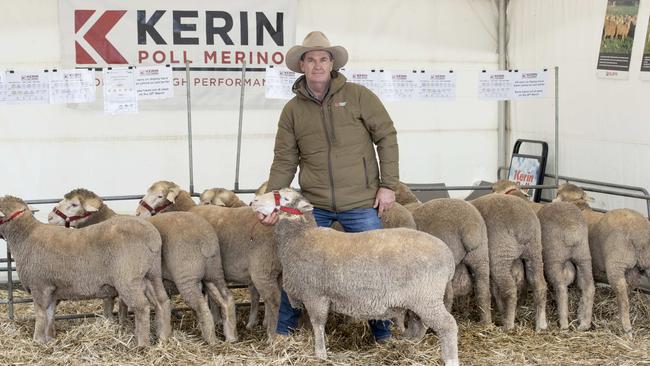
RISKY BUSINESS
Having grown up on a conservative grazing farm where spending was frowned upon, Nigel rewrote most of the lessons he’d learned from his risk-averse father.
The Kerins quadrupled their land holding and established Kerin Poll Merino, focused on fertility, growth rate and reproduction of their flock, with a steadfast goal of becoming Australia’s No. 1 Merino stud within a decade.
Less than a year later, Kerin was named the 2008 NSW Farmer of the Year, and by its sixth year of operation, Kerin Poll Merino became the highest grossing Merino ram sale in the country, a position they’ve proudly held since.
However, with clear evidence that long-time rainfall patterns were changing the climate, the Kerins pivoted again, introducing a stock market-inspired model of short trading cattle; buying, feeding and rotating them off farm again within four months. The model has proven incredibly successful, securing their farming business long term.
“We still get the same average rainfall but it comes in extremes of wet and extremes of dry, it was logic that if the weather has changed, our grazing habits had to change too,” Kerin says.
“Now we put grass at the forefront of every decision we make, we convert that rain to grass and we sell the grass to the highest bidder. While ever we’ve got grass, we’ve got options, and while ever we’ve got options, we sleep much easier at night,” he says.
It’s Kerin’s innate ability to read the climate and conditions, forecast grass growth and move sharply to capitalise on it, that led to them to arguably their most notable success.
When the drought broke in March 2020 and good rain began to fall at Yeoval, Kerin identified that producers would be looking for in-calf heifers to rebuild their depleted herds. Initially, he purchased 500 heifers from highly regarded bloodlines, but it kept raining so he kept buying, in all assembling 2508 Angus heifers over a period of weeks.
To create a point of difference at the sale yard and maximise returns, he undertook a complex program to rapidly artificially inseminate the heifers, one of the largest AI projects undertaken in Australian ag.
In March 2021, the pregnant heifers were sold through Auctions Plus, resulting in a $6.2 million cattle trade.
“You are not going to pay the bills if you are average, I know that for a fact,” he says bluntly. “The hardest thing about creating wealth is that you’ll have to change the herd you hang with.”
‘SUPPORT TEAM OF MENTORS IS CRUCIAL’
You won’t find Kerin labouring over a computer or spreadsheet, and it’s become something of local legend that the left leg of his beige jeans is permanently covered in Texta-notes and reminders he’s jotted down on his rounds of the farm. He says you don’t have to be the “sharpest tool in the toolbox” to get ahead in agriculture, you just have surround yourself with good people.
“A great support team of mentors is crucial, people whose opinions you trust. No one is smarter than all of us. I have zero education, but I have a passion for making money and what we don’t know we go to experts to find out,” he says.
Incredibly, the imposing pastoralist once suffered such a crisis of confidence, dogged with impostor syndrome, that he wore a bright pink rubber band around his wrist every day, with the words ‘this is easy, this is simple, this is fun’, as an ever-present reminder of how far he’d come.
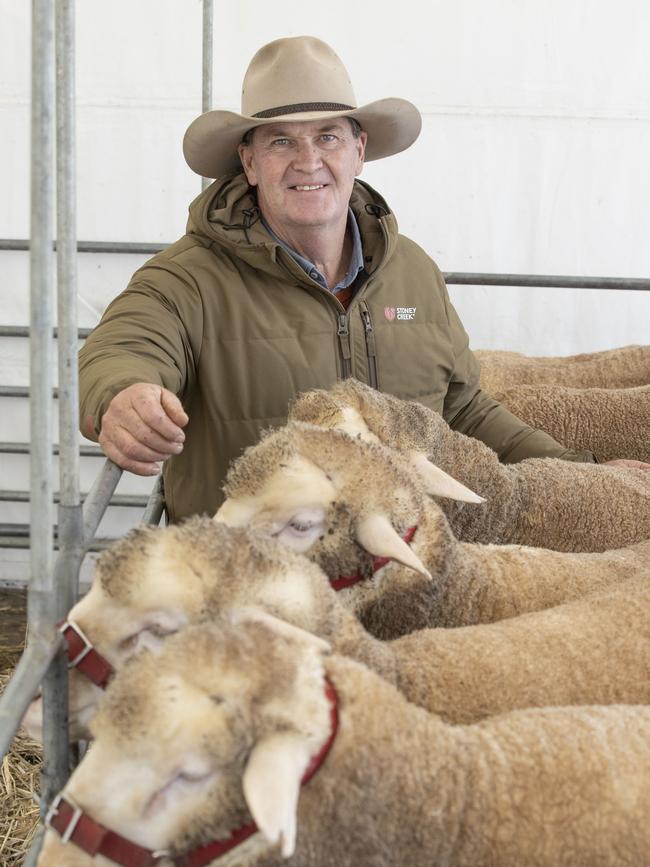
“Our real turning point came after I learned how to deal with the negative head chatter, once I got that completely out of my life, we went from good to great. I go off my head if I hear anyone using the words ‘tough’, ‘difficult’, and ‘can’t’, which is common language in agriculture. They’re putrid words and if that’s your mindset, you’ll fail. If you think things are tough, they will be.”
Currently, Kerin has 46,500 dry sheep equivalents on farm, and his phone runs hot with farmers from every corner of Australia seeking his advice, he’s happy to impart his learnings with those who shares his love and passion for Australian ag, and regularly hosts webinars, podcasts and information sessions to inform others and support the industry he loves.
“We had 700 people on a webinar last night wanting to hear about how we wean our lambs early. That’s incredible. I want the best possible outcome for the industry, and the best way to do that is to bring people on the journey with us. I have passion for helping people be successful in ag, farmers teaching farmers and relaying information, because that’s how we create change and build a prosperous industry for everyone. Having one another’s backs and knowing you’ve got a community to support you is vital. Our farm is open 24/7 to anyone who wants to come and see how we do things.”
TOP OF THE CHOPS
AMONG those Kerin admires, is genetics and livestock pioneer Tom Bull, who has revolutionised Australia’s lamb industry. Nicknamed, “ Australia’s lamb king”, the self-starter has championed the development of premium Wagyu lamb in the pursuit to produce the world’s best tasting lamb chops. Today, the business he began with funds borrowed from his father, is one of the most influential seedstock enterprises in the prime lamb industry, and his marbled lamb chops are on the menu at some of the world’s best restaurants.
“I had a pinch me moment in Singapore last year when we were eating our lamb at Burnt Ends, one of the world’s top restaurants, that was pretty amazing,” says the farmer from Holbrook NSW.
Much like Kerin, Bull credits his success to doing the opposite to the industry norm, tossing out tradition and focusing on profitability. Raised on a sheep farm just down the road from the once-sprawling Kinross Station, Bull says he grew up with a “tweed-coat tradition” of sheep farming, where wool was king and lamb was just a by-product.
“I couldn’t understand why there wasn’t specialist lamb breeds like in the beef industry, bred for quality lamb, not wool,” says Bull, who was The Weekly Times Coles Farmer of the Year in 2018.
“About a decade ago we saw the opportunity for marbling in lamb, it wasn’t rocket science,” he explains. “Wagyu beef was a billion-dollar industry, why couldn’t lamb follow? It presented an opportunity to look at what genetics could do to create a premium lamb offering. We took a ute load of lambs and began a trial and the results were incredible. It was a wow moment. The time has come for us to stop being beef’s poor cousin.”
Rather than labouring on a specific breed of sheep and convincing the world to eat that lamb, Bull looked at what consumers wanted to eat, and then bred the sheep to meet the demand.
Within five years of breeding their first composite LambPro progeny, he’d smashed Australian sales records. Today, his Kinross Station branded lamb retails for upwards of $120 a kilogram overseas and his product on shelf in the US, China, Hong Kong, Taiwan, Malaysia, the Maldives, Singapore and Dubai.
“We’ve had plenty of knockers, and people saying to us ‘you can’t charge that for lamb’, but we pay upwards of $200 for Wagyu beef, so why not?”
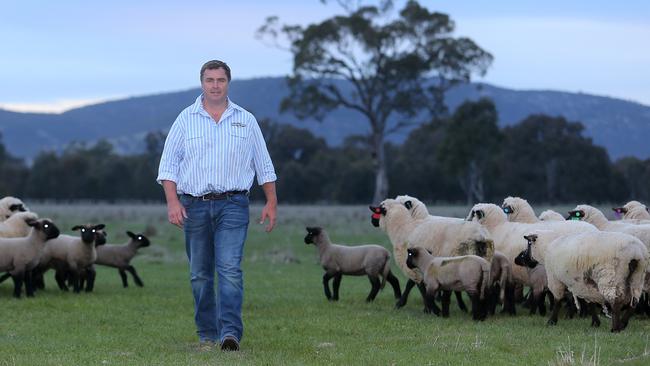
‘I GET EXCITED FOR THE OPPORTUNITIES’
Bull’s love affair with lamb began when he was a kid, shadowing his father, Rick, on the family’s farm. At just 10 years old, and with Rick’s encouragement, Tom started his own breeding stud by skimming the off the ewes mis-drafted at shearing. He ended up with 30 ewes, but Rick told him he could only keep 10. After carefully analysing his flock he started a Suffolk stud and merged White Suffolks and Poll Dorsets, then eventually maternal composites and Hampshire Downs.
All before he’d finished primary school.
After graduating from Orange Ag College, Bull, now 47, was eager to learn the supply chain from the ground up, and took a cadetship with an abattoir, which included time in the boning room to master every cut of lamb.
Then in 2001, with the help of his father, he bought a 240-hectare farm at Holbrook and together with wife Phoebe, began putting his knowledge into practice. This season he’ll tag 14,000 lambs.
“Plenty of people said marbling is a waste of time, but the Wagyu industry in Australia is a billion-dollar industry, the Angus industry probably $3-4 billion. Once we see a high end branded product in the mainstream marketplace, you’ll see change like we saw in beef.”
Like Said and Kerin, Bull’s vision for the industry is not just about the now, but the legacy he can leave for the next generation too.
“I get excited for the opportunities this industry offers young people, we work with companies all around the world and agriculture is not just about being on the farm. But at the moment the average age of sheep producers is increasing, in the 2000s it was in the 50s now it’s in the 60s.
“The sheep industry has got huge untapped potential. I’m passionate about bringing the next generation on board, but to do that we need to make lamb sexy again, to keep kids on the farm and bring new people into the industry.”
“We are seeing generational change. Tradition no longer cuts it. Those farms are getting swallowed up, not only by corporates, but the rise of sophisticated family corporates. The lamb trajectory won’t stop, I couldn’t be more excited about the next 10 years.”
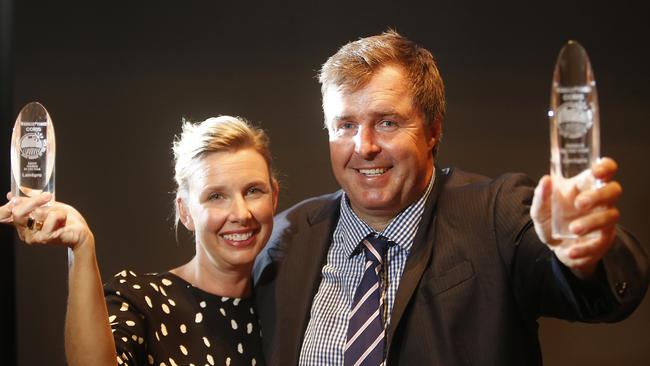
NATIONAL TREASURES
Agrifutures’ Harriet Melish swells with pride when she visits far and away parts of the world, only to find Australian products and the Australian-led innovations in her travels.
She says that there is strong global interest in what Australian producers are doing, particularly from investors who see our quality, ingenuity, and ability to adapt to a tough-climate as trademarks of the Australian ag.
Australian agriculture, she adds, offers a compelling story, and a provenance of product and product quality that is globally recognised second to none.
“We are a long way from the rest of the world, and we need to go that extra step to capture attention. We have some of the world’s harshest conditions and from a scale perspective we have really large and remote properties that need to find innovative ways of doing things,” she says.
“Australian producers are innovating in new and exciting ways, whether its tackling food security, climate change, workforce problems or driving the consumer sector, and most importantly there’s a greater willingness to embrace change and a mindset to tackle a problem head on and find a way of solving it.
“That’s what drives innovation.”



